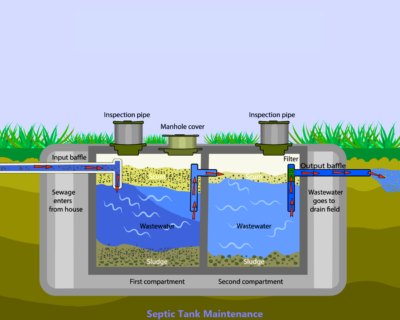In the fast-evolving digital marketing landscape, blogging remains a powerful tool for businesses and individuals to engage their audience, establish authority, and drive revenue. Crafting a profitable blog post in 2023 requires a strategic approach combining compelling content and SEO techniques. This guide will walk you through creating a blog post that captivates readers and ranks high on search engines, ultimately leading to increased traffic and revenue.
Understanding Your Target Audience
Before embarking on your blogging journey, it’s imperative to have a deep understanding of your target audience. By delving into their preferences, pain points, and aspirations, you can tailor your content to resonate with their needs. This connection not only enhances reader engagement but also establishes a sense of relatability that is fundamental to successful blogging.
Keyword Research and Strategy
Keywords serve as the compass guiding your blog post toward your intended audience. Rigorous keyword research is vital to uncovering the phrases and terms your potential readers are actively searching for. Advanced tools such as SEMrush and Ahrefs empower you to identify keywords with substantial search volume and moderate competition, offering a potent opportunity to boost your content’s visibility in a sea of information.
Crafting Captivating Headlines (H1)
The art of crafting an attention-grabbing headline cannot be underestimated. In an age where information is abundant and attention spans are fleeting, a headline encapsulating your content’s essence and intrigues the reader is paramount. This is your first opportunity to make a compelling impression and entice users to delve deeper into your blog post.
Structuring Your Content (H2)
A well-structured blog post is akin to a well-organized book. Implementing clear H2 headings helps readers navigate through your content seamlessly. These headings act as signposts, guiding readers through distinct sections of your post and enhancing readability. Each H2 section should comprehensively cover a specific facet of your topic, creating a cohesive and informative narrative.
Organizing with Subheadings (H3)
To further enhance the readability and navigability of your blog post, employ H3 subheadings within each H2 section. These subheadings serve as miniature guides, offering readers a glimpse into the following content. Search engines also benefit from this organizational structure, better comprehending the context and relevance of your post.
Incorporating Visual Elements
The adage “a picture is worth a thousand words” holds in blogging. Integrating relevant images, infographics, and videos breaks the monotony of text and enhances the overall user experience. Visual elements convey information succinctly, making complex concepts easier to grasp and retain.
Keyword Optimization and On-page SEO
Striking the delicate balance between incorporating keywords for SEO and maintaining a natural, conversational flow is an art form. Sprinkle your target keywords strategically throughout your content, ensuring they seamlessly integrate within the narrative. Effective on-page SEO extends beyond keywords and encompasses elements such as meta titles, headers, and alt text for images.
Writing Engaging and Informative Content
Engagement is the holy grail of successful blogging. Crafting content that informs, entertains, or solves a problem captivates readers and encourages them to stay longer on your page. Address common pain points, share unique insights, and inject your personality into your writing to foster a genuine connection with your audience.
Utilizing External and Internal Links
Back your claims and assertions with credible external sources. Integrating outbound links to authoritative websites validates your content and positions you as a reliable source of information. Similarly, internal links direct readers to other relevant pieces within your blog, prolonging their stay and deepening their engagement.
Meta Descriptions and Snippets
Crafting a concise yet compelling meta description is like creating a miniature advertisement for your blog post. This snippet, often displayed in search results, provides a sneak peek into your content’s value proposition. You can significantly improve click-through rates and attract more organic traffic by enticing users with a well-crafted meta description.
Mobile Responsiveness and Page Speed
As mobile devices dominate the digital landscape, optimizing your blog post for mobile responsiveness is no longer a choice—it’s a necessity. Ensuring your post adapts seamlessly to various screen sizes enhances user experience and positively impacts your search engine rankings. Additionally, a swift-loading page reduces bounce rates and keeps users engaged.
Promoting your Blog Post on Social Media
Social media is a formidable ally in extending the reach of your blog post. Incorporating easily accessible social sharing buttons encourages readers to amplify your content across their networks. This organic sharing broadens your post’s exposure and cultivates a sense of community around your brand.
Read More: How to Create a Profitable Blog (With Free Traffic)
Measuring and Analyzing Performance
The journey doesn’t end once your blog post is published. Employing analytics tools, such as Google Analytics, enables you to track crucial metrics. Monitor page views, bounce rates, time spent on a page, and conversion rates. These insights offer a roadmap to fine-tune your content strategy and improve your blog’s performance.
Monetization Strategies
If your blog post serves as a revenue stream, explore monetization avenues that align with your audience and niche. Affiliate marketing, sponsored content, and digital product sales are famous income-generating avenues. However, maintain a delicate balance between monetization and providing genuine value to your readers.
Conclusion
Crafting a profitable blog post in 2023 is a harmonious blend of art and science. By masterfully integrating engaging content, strategic SEO techniques, and a profound understanding of your audience, you can create a blog post that captivates readers and drives tangible results. Remember, the digital landscape is ever-evolving; adaptability, continuous learning, and a genuine passion for your subject will guide this exciting journey.
FAQs
Is it necessary to include images in every blog post?
While images undoubtedly enhance visual appeal, their inclusion should align with your content’s context and purpose. Incorporate ideas where they amplify your message or elucidate complex concepts.
How often should I publish new blog posts?
The ideal publishing frequency varies based on your resources and goals. Consistency is vital; prioritize quality over quantity to maintain reader engagement.
Are there any SEO practices I should avoid?
Steer clear of keyword stuffing, irrelevant outbound links, and neglecting the mobile user experience. These practices can undermine your SEO efforts and user satisfaction.
Can I update my blog post after publishing it?
Absolutely! Regularly updating your blog post with fresh insights, statistics, or developments keeps it relevant and signals search engines that your content is current and valuable.
What’s the ideal length for a blog post?
Blog post length should prioritize comprehensive coverage of the topic. While there’s no fixed word count, aim for a size that thoroughly addresses the subject matter while maintaining reader engagement.








